Two high floors, even several rooms and three hundred and eighty square meters of space. Were it not for the daylight problems typical of a mansion of this era, even today's millionaires would not despise such a home. It is very possible that this architectural miracle was built when the old gods still ruled in Greater Poland.
Archaeologists found the trace of the magnificent Poznań residence only a dozen years ago and it still causes heated disputes. No wonder:the discovery of the palas in Ostrów Tumski turned upside down what we knew about the beginnings of Poland.
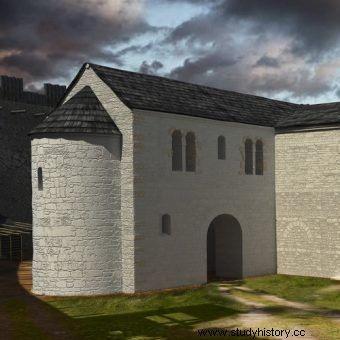
Fragment of the visualization of Mieszko I's palas made by Piotr "Pitwala" Walichnowski. The illustration comes from Kamil Janicki's book "Iron Ladies".
The theory has returned to favor, according to which it was Poznań, and not Gniezno, that was the capital of the Mieszko I state. Or at least - it was at the very beginning of the prince's reign. It is here that Dobrawa came from the Czech Republic and spent the first, turbulent years of her stay in Greater Poland. Here, it seems, in the recently excavated palace chapel, Mieszko was baptized.
One inconspicuous beam
There are no easy ways to determine the construction time of stone structures. However, wooden beams were found under the foundations of the residence in Poznań. This is a key piece of information, because wood can be dated with great accuracy as long as its grain cross-section is visible. Their increment often makes it possible to determine even every year when the tree used in a given construction was cut.
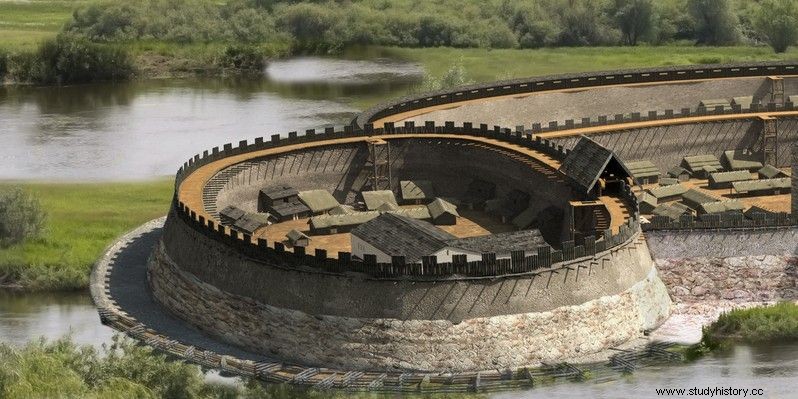
The princely part of the Poznań stronghold of the first Piasts. Behind the walls you can see Mieszko's palace and the Dobrawa chapel. A fragment of a visualization made by Piotr "Pitwala" Walichnowski.
In the case of Poznań, the role of the record is played by a beam pulled from the place where the palace threshold was located. For hundreds of years, princes, duchesses, servants and noble guests have passed over it. Thousands of people passing the gates of the Piast seat. Today, thanks to an inconspicuous piece of wood, it can be said that the palace was built shortly after the middle of the 10th century.
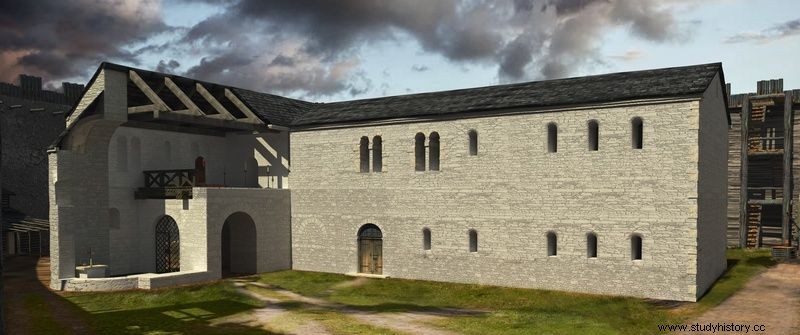
The palatium of Mieszko with a cross-section of the Dobrawa chapel. Visualization made by Piotr "Pitwala" Walichnowski.
The exact date remains a mystery as the last, outer layer of rings has not survived. Perhaps, however, the precise date when the construction of the palace began can be determined in another way:simply by looking at the plan of the residence.
The secret of the princely house of prayer
All known seats of the first Piasts - and the remains of four stone palaces from the times of Mieszko I and Bolesław the Brave were found - had chapels. In each case, the place of prayer was a key element of the residence, clearly connected and exposed. In everyone, except Poznań. Here the chapel looked very inconspicuous, and in addition, it was built not on the main axis of the building, but on the side, on the extension of the south wall of the residence.
Archaeologists commented with surprise that such a construction is unique. Anyway, it was the unique location of the chapel that made it possible to unearth its remains only in 2008 - almost a decade after the word about the location of the Poznań palace circulated around the world.
The chapel had a nave measuring only ten square meters. Even a tiny rotunda on the castle hill in Cieszyn, one of the oldest still standing temples in Poland, should be considered a giant in comparison.
In Poznań, the mass could be heard by several people at the same time, but certainly not the entire court, or even the ruler's immediate surroundings. Besides, the building does not match the rest of the structure at all. It gives the impression that it was forcibly attached to an already existing - or under construction - palace. And I suppose the supposition that this is what happened can be taken very seriously.
An act of faith or… a gift for a faithful wife?
It has been suggested more than once that Mieszko began to build a palace before he was baptized. The inspiration hardly came from Dobrawa or the members of her court. During this period, Przemyślids did not express any interest in brick architecture. Only a handful of stone churches from the times of Bolesław the Cruel are known, but nothing is known about stone palaces - even in Prague.
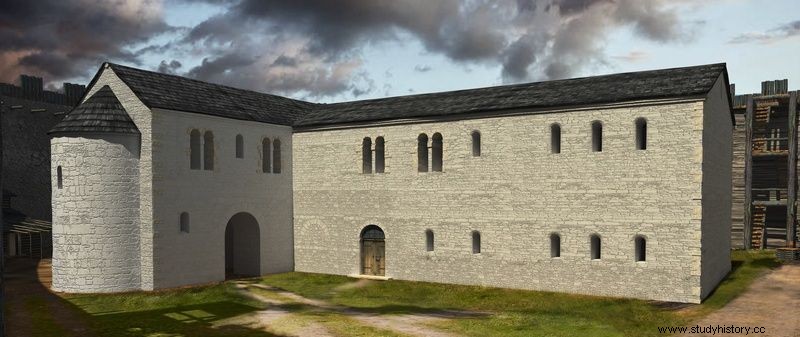
Even in Prague, the princes did not have such a palace. Visualization made by Piotr "Pitwala" Walichnowski.
Mieszko suggested rather imperial residences. The prince most likely went to Germany before his baptism, in 965 or 966. There, everything - or at least everything in the entourage of His Imperial Majesty Otto I - was bigger, more magnificent, more luxurious. Mieszko no longer had to rely on his wife's stories and his imagination. He saw with his own eyes what Latin civilization was. And he was obviously delighted.
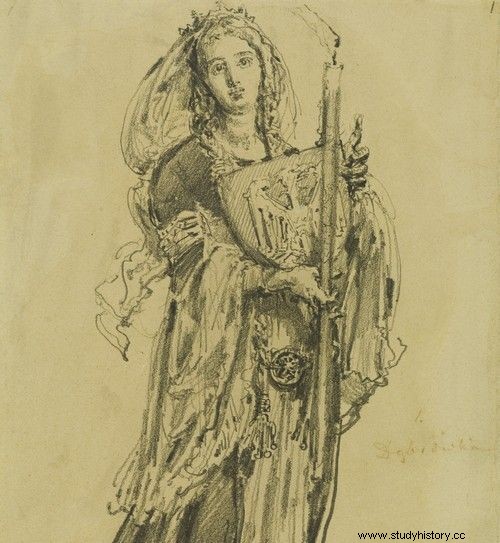
Probable inspirer of the addition of the chapel to the palace. Dobrawa in the illustration of Jan Matejko (source:public domain).
It is very possible that on the occasion of this trip he brought a team of bricklayers and architects to Wielkopolska, tempting them with a generous salary in silver. The ongoing war with the Lutycki Association undoubtedly made it difficult to carry out such a huge investment (the first stone palace in this part of Europe!). On the other hand - a magnificent residence, something that has not been seen in the country so far, could help to strengthen the prestige of the ruler in this difficult period.
Express investment
Construction started very quickly. The first shovel was probably put in 965, if there was no place for a chapel in the original layout. Only later, when the influence of Dobrawa on Mieszko grew stronger, and the prince himself began to be more and more interested in Christianity, a decision was made to add another element to the residence, a bit by force.
Quite modest, because Mieszko was guided only by respect for his wife and the will to fulfill her whims. At this stage, the ruler did not even suspect that he would soon himself fall to his knees in the newly built chapel ...
